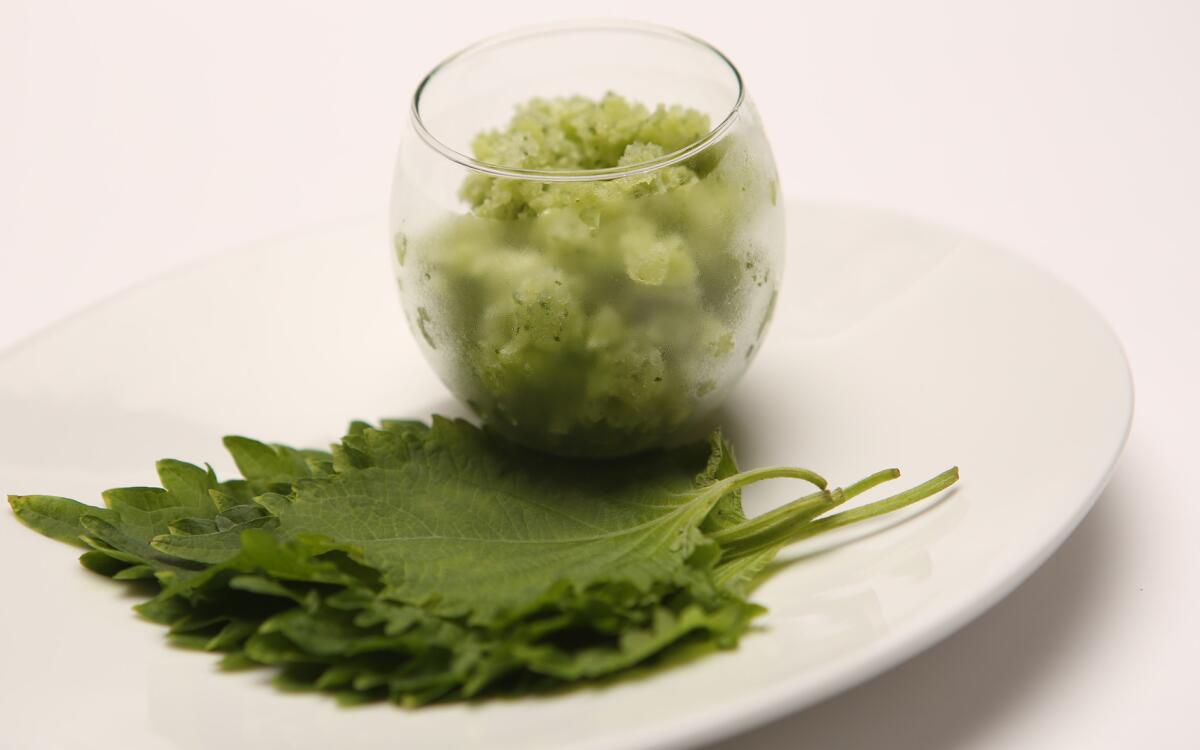Shiso sorbet

- Share via
Tokyo is one of the world’s greatest food cities, a massive and glorious place to eat that spans the culinary spectrum, from Michelin-starred restaurants to izakayas and ramen alleys. But much of that food can also be made at home, and it’s probably a lot more accessible than you might think. Which is reason to pick up a copy of “Tokyo Cult Recipes” by Maori Murota, a writer and chef who was born and raised in Tokyo, and whose project is to bring the dishes of her childhood to a larger audience.
The cookbook — first published in 2014 and recently out in wider release — combines 100 recipes and handy step-by-steps with a lot of lovely photography by Akiko Ida and Pierre Javelle. There are also city detours, highly pictorial stops into Tokyo’s kitchenware district, the famous Tsukiji fish market, and shops selling ceramics, crackers, crepes — and all that fake plastic food. The detours are in the kitchen as well: how to make rice, the many varieties of noodles. The recipes themselves are straightforward, often with annotated drawings or diagrams to pair with all the photographs.
This is not just a cookbook about nigiri sushi, gyoza, tonkatsu and curry udon, although all those classic dishes are between the pages. There’s also the less obvious, more homey stuff — macaroni salad, beef hot pot, rolled omelettes, salted salmon and even oden, the humble stew of winter vegetables in broth that you can even find at 7-Elevens in Tokyo. One drawback to the book is the recipe index, which is confusing and unwieldy. I’m also still not sure why these are described as “cult” recipes; maybe “everyday” or “home” sounded too pedestrian, which is true enough. Although matcha ice cream and spaghetti Napolitan (see: Japan’s Italian food fetish) are certainly deserving of their own cults. And ramen, of course, already has one.
Cookbook of the Week: “Tokyo Cult Recipes” by Maori Murota (Harper Design $35)
In a saucepan, combine the sugar, ginger and water. Heat over medium heat until the sugar is completely dissolved. Strain to remove any ginger fibers, then cool to room temperature.
Transfer the mixture to a blender or food processor, add the shiso leaves, lemon juice and egg white and blend until smooth.
Pour the mixture into an ice cream maker and follow the directions on the machine; alternatively, pour the mixture into a metal container and freeze, scraping the sorbet with a fork every hour or so to break up the ice cream crystals (this will give the sorbet a more granita-like texture).
Get our Cooking newsletter.
Your roundup of inspiring recipes and kitchen tricks.
You may occasionally receive promotional content from the Los Angeles Times.
















